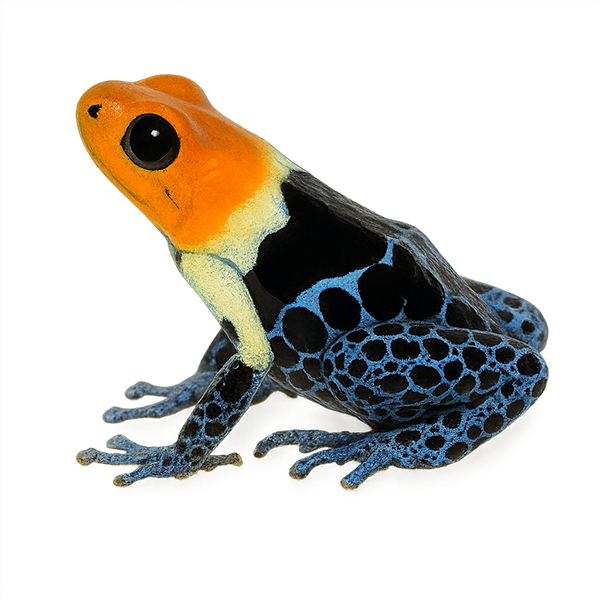Your wildlife photography guide.
Explore the fantastic poison frog in detail, study its behavior, prepare your shots.
Where to observe and photograph the fantastic poison frog in the wild
Learn where and when to spot the fantastic poison frog in the wild, how to identify the species based on distinctive features, and what natural environments it inhabits. The WildlifePhotographer app offers tailored photography tips that reflect the fantastic poison frog’s behavior, helping you capture better wildlife images. Explore the full species profile for key information including description, habitat, active periods, and approach techniques.
Fantastic Poison Frog
Scientific name: Ranitomeya fantastica

IUCN Status: Vulnerable
Family: DENDROBATIDAE
Group: Amphibians
Sensitivity to human approach: Suspicious
Minimum approach distance: 2 m
Reproduction period: November to March
Incubation: 12–14 jours
Births: December to April
Habitat:
Tropical forests, humid undergrowth
Activity period :
Primarily active during the day, with peak activity in the morning and late afternoon.
Identification and description:
The Ranitomeya fantastica, or fantastic poison frog, is a small, colorful frog native to the rainforests of Peru. Known for its striking patterns and vibrant colors, ranging from yellow to red, often with black spots, these frogs typically measure between 1.5 and 2 cm in length. They primarily inhabit humid undergrowth and feed on small insects. Their skin secretes toxic alkaloids, a natural defense against predators. Although fascinating, their habitat is threatened by deforestation, making them vulnerable. They play a crucial role in the ecosystem by controlling insect populations and serving as bioindicators of environmental health.
Recommended lens:
Macro – adjust based on distance, desired framing (portrait or habitat), and approach conditions.
Photography tips:
To photograph the Ranitomeya fantastica, focus on capturing the details of its colorful patterns. Use a macro lens to capture the texture of its skin and vibrant colors. Approach slowly to avoid startling it, and prefer times of the day when natural light is soft. A tripod can be helpful to stabilize your camera, especially in the dim undergrowth. Be patient and wait for the frog to settle in an interesting pose.
The WildlifePhotographer App is coming soon!
Be the first to explore the best nature spots, track rutting seasons, log your observations, and observe more wildlife.
Already 1 432 wildlife lovers subscribed worldwide

